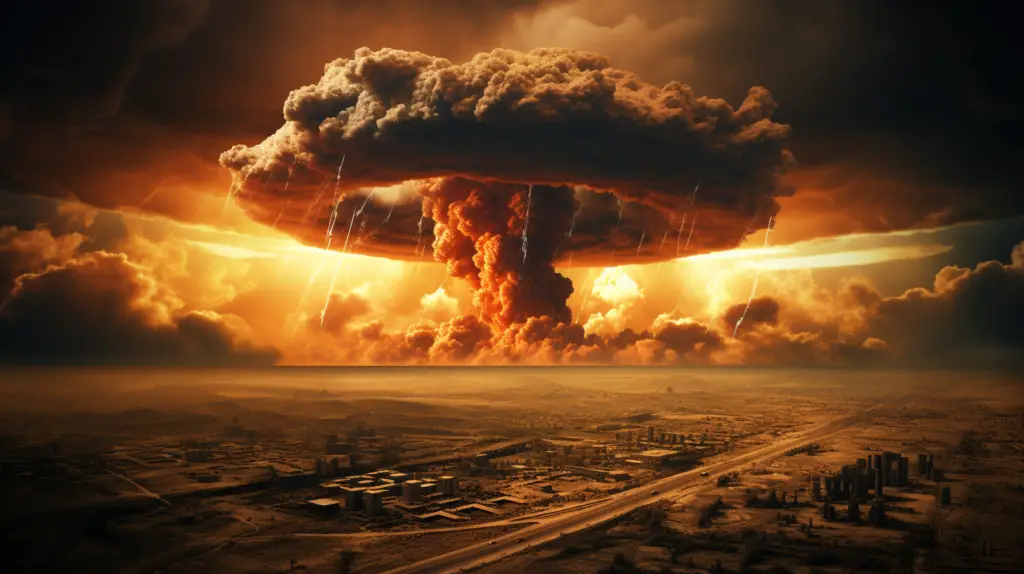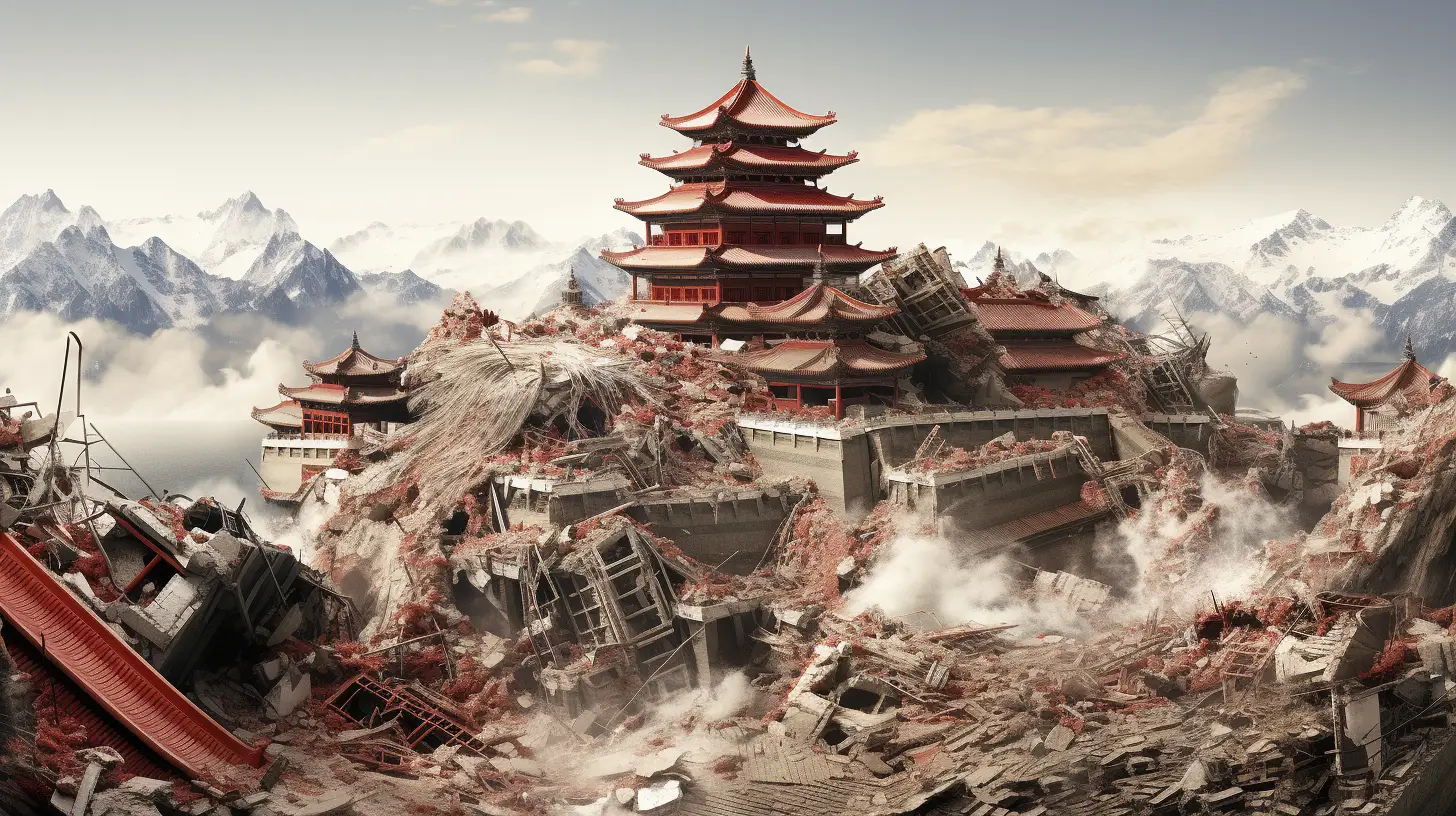As one delves into the annals of history, certain moments stand out as turning points, events so significant that they change the course of human events. The Trinity test, marking the first successful detonation of an atomic bomb, is one such moment. It was an explosion heard around the world, symbolizing humanity’s entrance into the Nuclear Age. This event, which took place in the desolate desert of New Mexico, was the culmination of years of scientific research and secret military operations.
In this article I explore 25 fascinating facts about the Trinity test, the first atomic bomb, and its profound and enduring impact on the world.
- The Name “Trinity” – J. Robert Oppenheimer, the scientific director of the Manhattan Project, named the test “Trinity” after a line from John Donne’s poetry: “Batter my heart, three-person’d God.”
- First Ever Nuclear Explosion – The Trinity Test, conducted on July 16, 1945, was the first ever nuclear explosion in history.
- Project Y – The bomb was developed at a secret laboratory in Los Alamos, New Mexico, referred to as “Project Y.”
- Manhattan Project – The Trinity test was the culmination of the Manhattan Project, a secretive and massive scientific effort during World War II, aimed at creating nuclear weapons.
- Implosion Design – The Trinity bomb, codenamed “the gadget”, used an implosion design, relying on conventional explosives to compress a sub-critical sphere of plutonium-239, achieving a supercritical state that sparked a nuclear chain reaction.
- Codename “Gadget” – The bomb tested in the Trinity test was often referred to as “the gadget” to maintain secrecy.
- Jumbo – Initially, a massive 214-ton containment vessel named “Jumbo” was built to contain the plutonium in case the test failed, but it was eventually deemed unnecessary and not used.
- Plutonium Core – The core of “the gadget” was a sphere of Plutonium-239, about the size of a softball.
- Witnessed from afar – The explosion was witnessed by observers more than 10 miles away, outfitted with welder’s glasses to protect their eyes from the intense light.
- Impact Crater – The explosion created a crater more than half a mile wide and eight feet deep, melting the desert sand into a green, glassy substance.
READ MORE: 25 Interesting Facts about “Little Boy”, the Atomic Bomb Dropped on Hiroshima - Trinitite – The green, glassy substance formed by the heat of the explosion is unique to the Trinity site and is known as Trinitite.
- Light Brighter Than the Sun – The initial explosion produced a flash of light brighter than the sun, visible from as far as away as 250 miles.
- 20 Kilotons – The explosion yielded energy equivalent to around 20 kilotons of TNT, a magnitude far beyond initial predictions.
- Oppenheimer’s Quote – Upon witnessing the explosion, J. Robert Oppenheimer famously quoted a line from the Hindu scripture, Bhagavad Gita, “Now I am become Death, the destroyer of worlds.”
- Not Publicly Acknowledged – The U.S. government did not publicly acknowledge the Trinity test until after the atomic bombings of Hiroshima and Nagasaki in Japan.
- Fake Press Release – To cover up the test, a press release was issued stating that an ammunition dump had exploded at the Alamogordo Bombing Range.
- Multiple Detonation Methods Considered – Different detonation methods, including dropping the bomb from an airplane or detonating it underwater, were considered before settling on a tower detonation.
- 100-foot Steel Tower – “The gadget” was detonated on a 100-foot tall steel tower to simulate an airburst.
- Radiation Exposure – Some of the scientists and military personnel involved in the Trinity test later suffered from various health complications, likely related to radiation exposure.
- Limited Fallout Knowledge – The scientists and military leaders of the time had a limited understanding of radioactive fallout, leading to inadequate safety measures for observers and personnel.
READ MORE: 25 Interesting Facts About “Fat Man”, the Atomic Bomb Dropped on Nagasaki - Birth of the Atomic Age – The successful test marked the beginning of the Atomic Age and heralded a new era in military weaponry.
- Preparation for Hiroshima and Nagasaki – The Trinity Test was a direct precursor to the atomic bombings of Hiroshima and Nagasaki, which led to the end of World War II.
- National Historic Landmark – In 1965, the Trinity site was designated as a National Historic Landmark.
- Open to the Public – The Trinity site is open to the public twice a year, on the first Saturdays of April and October.
- Reminders of the Past – Traces of Trinitite can still be found at the site, serving as a stark reminder of the power unleashed there over seven decades ago.
READ MORE: Understanding the 3 Main Forms of Radiation from an Atomic Bomb: Alpha, Beta, and Gamma
The Trinity test is a significant part of our global history. The detonation of the first atomic bomb marked a defining moment, showcasing the terrifying potential of human ingenuity and altering the course of warfare forever. As we continue to grapple with the implications of nuclear technology, the legacy of the Trinity test serves as a potent reminder of the immense responsibility that comes with such power.



